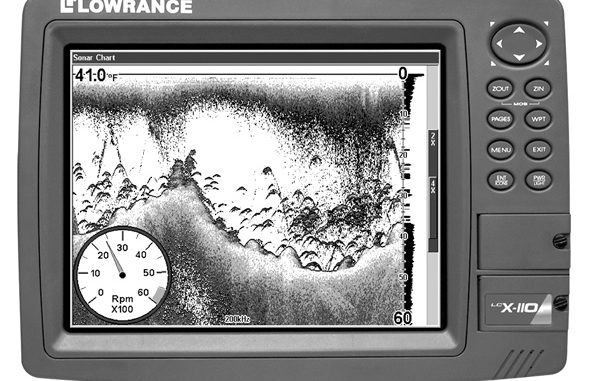
There are thousands of acres of ponds in the DuLarge area, and many of them hold redfish that seem to be swimming in air.
When navigating with a GPS chart plotter, it’s handy to have a water surface temperature reading on the screen so you can track changes in temperature as you move, and a depth reading to keep you from running aground.
This kind of communication between different types of electronics has been going on for many years, but the latest industry standard greatly improves the process.
NMEA 0183 has long been the industry standard for network language. Unfortunately, most boaters had to hire marine communications wizards to make the complicated protocol work. Getting two units to talk to each other involved connecting the proper “send” and “receive” wires from each unit, and then going into the menus of both units to find and match the right communication settings.
NMEA 2000 eliminates all the fuss by using simple plug-and-play connections. A single cable, called the system bus, runs throughout the boat and serves as the system’s spine.
The spine has a special terminator cap at each end and includes a “T” fitting close to each NMEA 2000 unit or sensor. Just plug in a connector cable between a “T” and an NMEA 2000-compatible device, and it can exchange information with any other unit connected to the bus.
Now, anybody who can operate a twist-lock connector can do their own NMEA wiring.
Lowrance Net
Lowrance is one of the first companies to embrace the new standard by offering a number of NMEA 2000-compatible units. Unfortunately, it’s causing its customer service department a problem.
In the past, all you had to do to connect a Lowrance GPS module to a Lowrance unit was to plug one end of a connector wire into the module’s pigtail and the other end into the unit. Doing that now generates the error message, “GPS module not responding.”
Connecting a new Lowrance GPS module to a new Lowrance unit now forms a mini NMEA 2000 network containing just those two devices. All NMEA 2000 networks must be connected to a 12-volt power supply in order to work.
The error message appears because the GPS module is no longer automatically powered by the unit and must be powered by the bus.
Lowrance makes this easy by adding a second power cable to the main power connector that plugs into the back of NMEA 2000-capable units. The installation instructions for the unit, and a separate, bright-red instruction sheet packaged with each unit, clearly state that the power connections for both the unit and the NMEA 2000 bus must be wired to a 12-volt source in order for everything to work. A surprising number of new owners are overlooking the second power connection.
Owners must hook up the unit’s main power cable (with red, black and white leads) and the NMEA power cable (with red, black and bare silver leads) as follows: Connect both red leads to the positive terminal of your battery using the included fuse holders and 3-amp fuses. Connect the black wire and the bare silver wire to the same battery’s negative terminal. The unit power cable’s white wire is for an external speaker. If it isn’t used, bend it back along the cable and tape it safely.
There is also a third cable (with blue, yellow, orange and bare silver leads) attached to the unit’s power connector. Lowrance NMEA 2000 units are backward compatible with NMEA 0183, and this data cable is used for those connections.
The NMEA 2000 bus can handle much more than just the same old traditional information. It can interface with an engine’s internal computer to pick up data like RPM, temperature and oil pressure. It can also collect float-gauge readings from fuel, oil, water and waste water holding tanks. All of this data can then be displayed by any unit with the software to read it.
This is just the start. Expect to see exciting new changes in the next generation of marine electronics.


